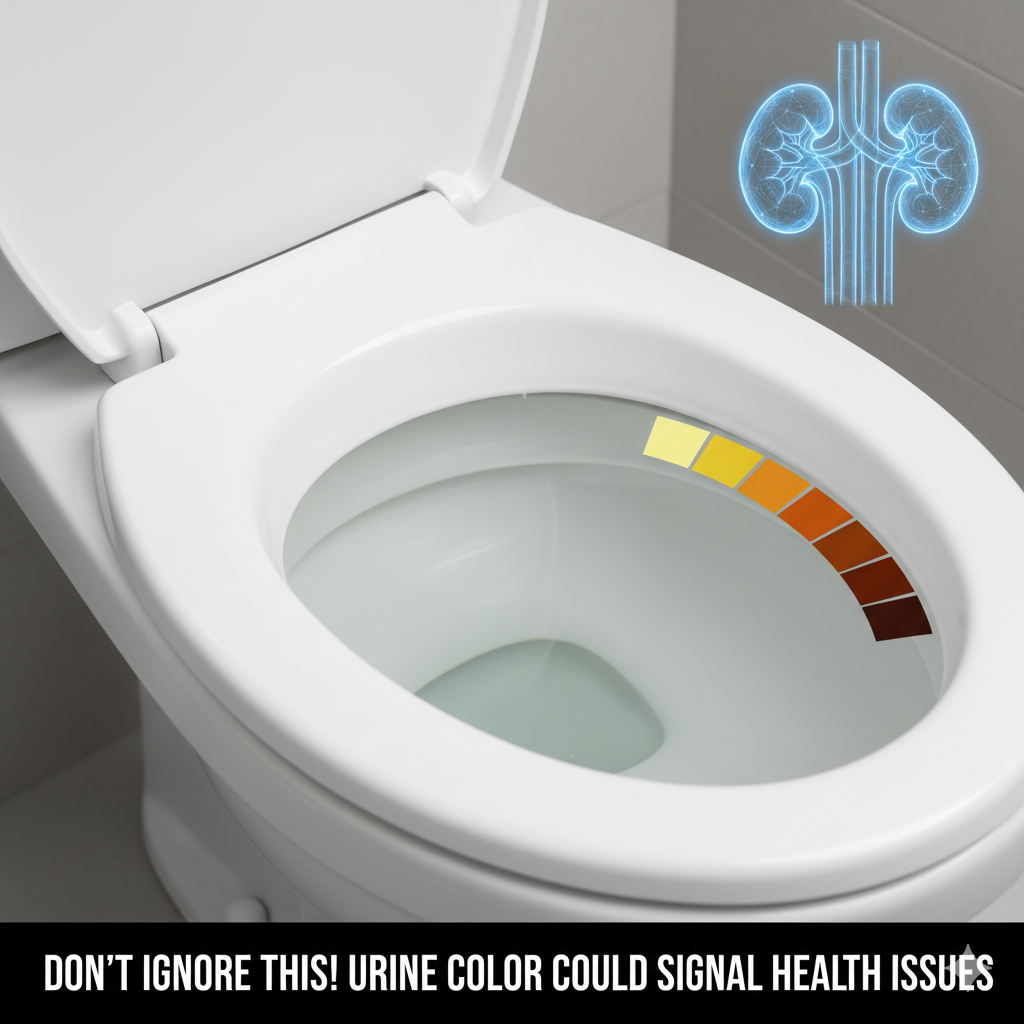Your body is constantly sending signals, and one of the easiest ways to monitor your health is right in your bathroom. The color of your urine can provide early warning signs of dehydration, infections, liver problems, or other hidden health issues. Understanding what your urine is telling you could help prevent serious complications.
1. Pale Yellow Urine — Healthy Hydration
If your urine is pale yellow, congratulations! This typically indicates proper hydration and normal kidney function. Maintaining consistent fluid intake is key to keeping your urine in this healthy color range.
2. Dark Yellow or Amber — Mild Dehydration
Darker yellow urine may be a sign that you need more water. Mild dehydration can also cause fatigue, headaches, and dry skin. Drink water regularly and monitor how your urine color changes throughout the day.
3. Orange or Brownish Urine — Possible Liver or Bile Issues
Urine with an orange or brown tint may indicate liver problems, bile duct obstruction, or certain medications like rifampin or laxatives. If you notice persistent dark urine with no obvious dietary cause, it’s essential to consult a healthcare professional.
4. Red or Pink Urine — Blood or Diet?
Red or pink urine can be alarming. It may result from blood in the urinary tract (hematuria) due to infections, kidney stones, or even more serious conditions like bladder cancer. However, consuming beets, berries, or certain medications can also temporarily change urine color. Persistent redness should always be checked by a doctor.
5. Cloudy or Foamy Urine — Infection or Kidney Issues
Cloudy urine may indicate urinary tract infections (UTIs), kidney infections, or the presence of excess protein. Foamy urine can also suggest proteinuria, a potential sign of kidney problems. If you notice consistent cloudiness or foam, seek medical attention.
6. Green or Blue Urine — Rare but Not Always Dangerous
Although uncommon, green or blue urine can occur from certain medications, dyes, or infections. While often harmless, unusual urine color should not be ignored if accompanied by other symptoms.
7. Strong Odor — Infection or Dehydration
A strong ammonia smell may indicate dehydration, while a sweet or fruity odor could signal diabetes or a metabolic disorder. Any sudden, persistent odor change should prompt a medical evaluation.
Why Urine Color Matters
Urine is a direct reflection of kidney and liver function, hydration status, and metabolic processes. Simple observations can help detect hidden health problems early. Paying attention to color, consistency, and odor allows you to respond promptly before symptoms worsen.
Tips for Monitoring Urine Color
-
Check your urine first thing in the morning for a baseline.
-
Keep a daily log if you notice unusual colors or changes.
-
Stay hydrated — water is your first line of defense.
-
Track dietary factors that can temporarily alter urine color.
-
Consult a doctor for persistent changes or accompanying symptoms like pain, fever, or swelling.
When to See a Doctor
Seek medical attention if you notice:
-
Red, pink, or brown urine with no dietary cause
-
Persistent cloudy or foamy urine
-
Sudden strong or unusual odors
-
Pain or discomfort while urinating
-
Changes that last more than 48 hours without explanation
Conclusion
The color of your urine is a simple yet powerful health indicator. By observing subtle changes and understanding what they might mean, you can take action early, prevent complications, and maintain better overall health. Don’t ignore these signals — your body is trying to tell you something important.
Your urine may seem ordinary, but it’s a vital window into your health. The next time you notice a change in color, smell, or consistency, pay attention. Acting quickly could make all the difference.

